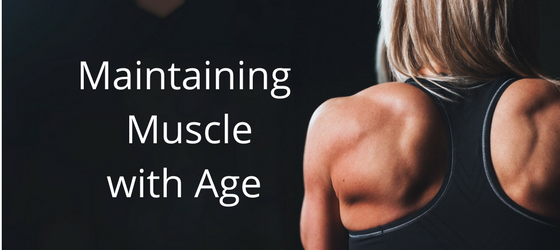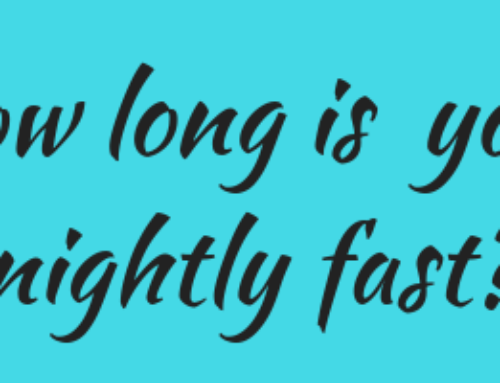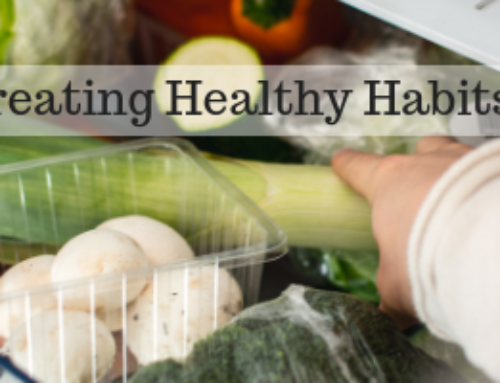In young adults, lean muscle mass generally contributes to about 50% of total body weight. However, aging can rob the body of muscle, and it is not uncommon for a person over 80 years of age to have only 25% of their total body weight as muscle. This signifies a big loss of muscle mass over the years. Strength also declines with age, which is related to the loss of lean mass, but also to the deterioration of muscle quality. Therefore, it is super important to put in place strategies to hold onto as much muscle as possible in the mid-life years to maintain strength, balance, and let’s face it – a toned and fit body.
Here are some tips you can implement to help maintain and even increase that precious muscle tissue – the fountain of youth!
Track your body composition. A body composition test will tell you how many pounds of lean tissue you have, verses pounds of fat tissue, and corresponding body-fat percentage. Knowing your body composition is super important — after all, what you can measure, you can improve. Checking your body composition over time is especially helpful, because it can tell you if you are maintaining the muscle you work so hard to build. I track body composition with most of my clients, as it provides the metrics that look beyond just the number on the scale. It also gives me a clue as to how a person is responding to prescribed dietary regimes and exercise patterns. Schedule your body composition test with me today!
Strength train. You have probably heard how important strength training is for building and maintaining muscle tissue, but are you doing it consistently? It is generally suggested to work each major muscle group 2 – 3 times per week. Women tend to be less eager to hit the weights, but strength building exercises help to not only build muscle, but also bone. Strength training also improves fat burning, and primes muscle tissue to metabolize sugar, thereby lowering and improving blood sugars. This is super important, because if your muscle becomes resistant to the effects of insulin, then you are more likely to lose muscle mass, and thereby your ability to burn fuel -a.k.a. your metabolism.
Lower stress. Being over-stressed is one sure way to lose muscle and gain fat. This is primarily because the stress response causes the body to produce the stress hormone — cortisol. Now, we need cortisol, because some stress is good for us. But chronic stress, not so much. See, it is cortisol that tells the body that it is in “emergency” mode. This in turn, signals the body to use “quick” energy in the form of sugar. The result — sugar is burned in preference to fat. Do you ever get sugar cravings under stress? This could be the cause. As well, chronic stress over time can shorten lifespan. On the other hand, lowering stress and being stress resistant may help to slow the aging process.
Engage in relaxing, meditative-like activities. Gentle yoga, meditation, taking walks in nature, warm baths – these are examples of activities that can help bring down that stress response, especially helpful after a hard day at the office. With a lower stress response, your body is at an advantage to build muscle and repair itself which brings us to the next strategy.
Get your sleep. It is during sleep when the body repairs itself. To build muscle, you must do some kind of strength building exercise. This activity breaks down muscle tissue, but a lot of the repair and rebuilding work is done in the evening, especially during deep sleep. Aim for 7 – 9 hours per night.
Eat adequate protein. Inadequate dietary protein during even a short period can result in a loss of muscle mass, especially in the presence of a pro-inflammatory state. Protein provides the raw material in the form of amino acids to help re-build your muscle tissue after exercise. It also helps tame hunger, an added bonus! Get a serving of lean, clean protein at each meal. Think foods like eggs, cottage cheese, Greek yogurt, tofu, a high-quality whey protein powder like Paleomeal or Whey Cool in a smoothie, fish, poultry, lamb, or grass-fed beef. A daily intake of 20 – 30% of daily calories from protein is a rough target to shoot for, depending on your activity level. If you come in for a body fat test, then I will provide you with a specific target protein intake for you based on your total lean mass.
Balance protein foods with vegetables and fruits. Though protein is important for building and maintaining muscle, excess protein in the diet, as well as grains, without enough alkaline forming foods, like vegetables and fruits, can contribute to a more acidic state, sometimes termed ‘acidosis’. Also, as we age, our bodies become more acidic by nature. The key isn’t to reduce your protein intake, but to balance the protein out with alkaline forming foods like vegetables and fruits. We need both. In fact, diets that favor potassium rich fruits and vegetables have been shown to favor the preservation of muscle mass in older men and women. A good rule of thumb is to shoot for two full cups of vegetables at both lunch and dinner. Another way to look at it is that half your plate should be vegetables at lunch and dinner. About a fourth of it should be protein. Supplementing with a green drink can be an excellent way to up your alkalinizing greens, I recommend a tablespoon of EssentiaGreens daily to help diminish acidosis and favor preservation of lean tissue – muscle and bone. Densely packed with antioxidant-rich vegetable juices, EssentiaGreens tastes great, and is an easy habit to adopt.
As always, if you enjoyed this blog post, please share with family or friends.

References:
Kalyani, R., et al. “Age-related and disease-related muscle loss, the effect of diabetes, obesity, and other diseases.” Lancet Diabetes Endocrinol 2014 Oct
Dawson-Hughs, B., et al. “Alkaline diets favor lean tissue mass in older adults.” Am J Clin Nutr 2008 Mar





